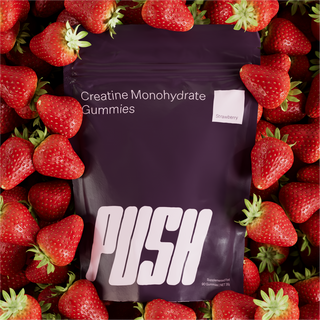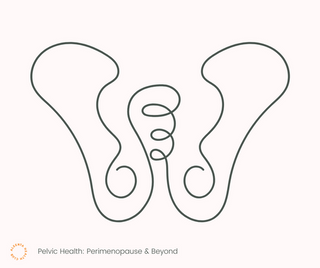Music is an essential part of class at Aleenta Health Club; have you ever noticed that each fitness style has its own uniquely curated playlist? HIIT-style, cardio-based classes use beat-driven, up-tempo songs, whilst Pilates, yoga and lower-intensity classes feature a steadier, even calming, musical mood. Well, this isn’t just to keep up with the latest hits! For decades, scientists have been researching the effectiveness of music on exercise with promising results.
So, what can music really do for you in your workout?
1. Listening to music pre-workout increases your performance.
You read that right, music has benefits even before you step foot in the studio! A 2012 review of more than a decade’s worth of studies concluded that:
“Pre-task music has been shown to optimise arousal, facilitate task-relevant imagery and improve performance in simple motoric tasks.” (i)
In laymen’s terms, all this means is that popping on some tunes during your commute or simply arriving early and tuning in to our pre-class playlist can help make you more excited about your workout, get you thinking about your workout and thus improve your performance during your workout!
2. Working out to music further benefits your mental health.
We often discuss the psychological benefits of exercise on our blog, but did you know that the music you work out to can also improve your mental state? Not only did the above review report a magnified, positive improvement on psychological state of 3-19% (ii), but this 2020 study also found that working out to motivational music influences our emotions in a positive way (iii). This is because the feel-good, positive qualities that we assign to music, when engaged with, promotes those positive emotions within us. Hence, listening to music while you exercise makes you feel good!

3. More positive emotions = reduced perceived exertion = higher endurance and longer workouts!
The more positive you feel about something, the more you want to do it, right? Well, that’s exactly what scientists found when it comes to exercising and music. It is well researched, documented and reviewed in over 25 studies that listening to music while exercising reduces your perception of how hard you are working (iv). Basically, it feels easier, when in reality your body is actually using the same amount of effort and energy as usual (or sometimes, even more! But we’ll get to that…).
Due to this psychological effect, you are actually able to work out for longer, thus increasing your endurance. In a 2017 study, researchers put this exact idea to the test and had 25 male and 25 female young adults execute the same exercise with and without music. The results?
“Total exercise duration in the whole group with music was significantly greater than exercise duration without music.” (v)
The subjects were able to exercise for longer when they listened to music! So, if you are looking to improve your overall stamina and endurance, keep this in mind during your next workout.
4. It’s all about tempo!
Here’s why every single class doesn’t use the same music; studies have shown that tempo matters, especially in relation to the type of exercise being executed. To achieve a maximum heart rate of 40-90%, current research suggests a tempo of 125-140bpm (beats per minute) (vi). This means that in classes where the aim is get the heart rate high, such as HIIT, a fast tempo, or high bpm, will be most effective.
You might be thinking, “but barre and Pilates also increase my heart rate, so why is the music not always fast and pumping?” Well, this is for a few reasons; the first is that barre is low-impact exercise, so while we do want to get your heart pumping and sweat flowing, it’s not the main goal of class. Additionally, research shows that it is advantageous for the rhythm of the music to match our movements (vii). In a fitness style like barre and Pilates, the emphasis is not always on the speed of the movement because we aren’t always focused on cardio. For strength work that requires controlled movement, a slower tempo is more beneficial! Similarly, when trying to de-stress the body whether through savasana at the end of class or throughout a yoga practice, research suggests a tempo of 60-70bpm (viii).
Generally, our classes at Aleenta Health Club tend to fluctuate between these recommended tempos to give our instructors freedom in the creation and curation of their classes whilst still optimizing your workout. However, if you are after a workout specifically tailored to the beat, check out Sascha’s Barre Beats series on Me by Aleenta. Sascha created 5 unique, advanced-level barre classes that move at a constant, 130bpm pace. If you love a challenge and want to try working to a continuous beat, get a taste for the series in these free YouTube classes!
5. Songs about sweating actually work better!
I couldn’t believe this one when I read it, but it’s true; in their scientific review, researchers Karageorghis and Priest concluded that part of what causes music to improve our psychological state is their content.
“Music containing affirmations of exercise or inspirational references… promote motivational imagery and self-talk.” (ix)
So, if you’re wondering why you love sweating it out to Britney’s “Work B*tch” so much… that’s why!
What can you do with this info outside the studio?
At the very least, you can make yourself a pump-up playlist to get motivated prior to class and increase your performance! However, you can also take it a step further: one of the biggest takeaways in current scientific literature is that the music selected for a workout should match the personal preferences and characteristics of the individual in order to yield the best results. In a group setting, this entails making our music at Aleenta Health Club as varied as possible in terms of genre, decade, artists, etc, to cater to as many of our beloved members as we can. Of course, we can’t possibly please everyone!
That’s where you come in; you know what music you like, and together with the power of science and this blog, you can curate a bomb playlist for yourself to exercise to outside of the studio. If you like going on runs or doing at-home workouts, consider making your own playlist to use. And of course, you can always pass on your favourite song suggestions to the Aleenta Health Club team, and we’ll do our best to incorporate them into class!

Did you know you can find all our class playlists on Spotify?
Want more ways to optimize your workout? Check out these technique tips, and these ways to ensure success on your fitness journey.
Written by Sascha Czuchwicki
Works Cited
(i, ii, iv, vi - ix) Karageorghis, Costas I. and David-Lee Priest. "Music in the exercise domain: a review and synthesis (Part I)." International Review of Sport and Exercise Psychology 5.1 (2012): 44-46.
(iii) Terry, Peter C and et al. "Effects of music in exercise and sport: A meta-analytic review." Psychological Bulletin 146.2 (2020): 91-117.
(v) Thakare, Avinash E, Ranjeeta Mehrotra and Ayushi Singh. "Effect of music tempo on exercise performance and heart rate among young adults." International Journal Physiology Pathophysiology Pharmacology 9.2 (2017): 35-39.





